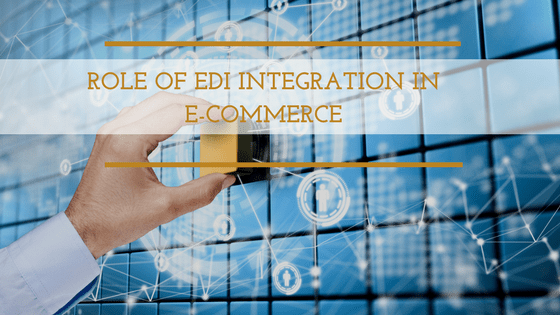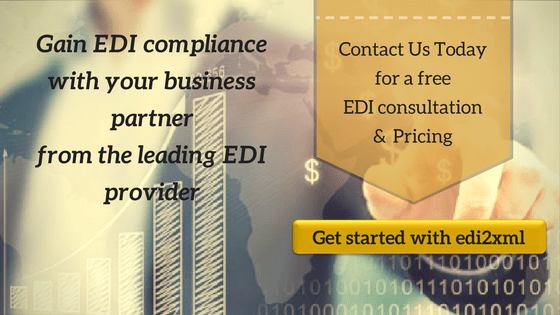Last Updated on December 13, 2022 by Tatyana Vandich
Role of EDI Integration in The Global E-commerce Trends 2023
This post was updated to reflect current trends and information.
We get a lot of questions about the relationship between our EDI Services and e-commerce; So, we have decided to close this year by predicting the global e-commerce trends for 2023, and the role of EDI Integration in e-commerce. In this article, you will learn how our popular EDI2XML Fully Managed Services can help increase your e-commerce success in 2023.
The Global E-commerce Trends 2023

2023 is around the corner it’s time to plan your actions. E-commerce continues to show rapid growth, but competition is growing faster than the market itself. This means that it will be not so easy to “win hearts” of buyers, and you can lose them more easily. Customers will be more and more capricious about delivering goods and prices.
2023 will be the year when competition in e-commerce will reach a new level. More and more young companies are appearing in the online marketplace. The big, strong brands are heavily promoting their online offerings on the Internet. They are looking to occupy a significant part of the e-commerce market, because consumers are increasingly going online.
According to Statista in 2022, e-retail sales surpassed 5.7 billion U.S. dollars worldwide.
E-commerce in the United States of America
Since the dawn of e-commerce, the main driver for the growth of this market was the United States. Online trading has become a global phenomenon, but the US remained one of the most important markets for e-commerce.
The annual increase in sales via the Internet has led to an explosive growth in e-commerce in the United States over the past 15 years.
According to Digital Commerce 360 US eCommerce grows 7.3% in Q2 2022
Although growth rates remain active, the US market is not so far from saturation point. We can expect that sales to stop growing at such a rapid pace.
The American e-commerce market gave way to China
The situation in the Asian markets is directly opposed, especially in China. According to forecasts, the rapid growth of e-commerce will continue in China. The growth of Chinese online sales is taking a huge share of the global e-commerce market.
Despite the large volume of sales in America, the world record set by the Chinese online giant Alibaba that records $56bn in first post-virus Singles’ Day sales, beating 2019 high.
According to John Caplan, head of North American B2B, Alibaba Group, More than 150,000 brands and merchants doing business on Alibaba’s online platforms.
Revenue is expected to show an annual growth rate of 13.9 % resulting in a market volume of US$956,488 m in 2022.

Source: Statista
The growth of e-commerce in Asian countries has serious consequences for companies engaged in online business. To benefit from the new trend, they need to enter the international market with their proposals.
EDI – unlimited possibilities to sell across the globe
The advantage of online trading is that you do not need a physical store in order to start selling in a new country. International delivery of goods is becoming more and more accessible.
Read: Must-Have BigCommerce Integrations
However, you should always keep in mind that it is practically impossible to carry out online business, without full integration of systems between your eCommerce platform and your vendors, including Electronic data interchange (EDI); especially we are now in the international trade and transactions are becoming very “time-sensitive”.
EDI and systems Integration, play a major role in e-commerce. To be a supplier of companies such as Amazon, Wal-Mart, Cabela’s, Bed Bath & Beyond, Costco, and other important retailers, you need to be able to send and receive documents electronically.
EDI has proved its reliability and importance for businesses. Processing orders in digital format automatically increase the speed, accuracy and efficiency of any business.
Fully Managed EDI Service for E-commerce
EDI2XML Managed Services is the perfect option for businesses looking to simplify their entire EDI and integration process with their Trading Partners. This service is ideal for businesses of all sizes, from various industries.
EDI2XML is a full-service offering. Our team of EDI and IT integration experts handle a company’s entire EDI project from start to end. All conversions of EDI files are done at our end, leaving customers with no on-site installation of software or hardware. Their EDI project is on time and within budget.
Keep learning about EDI integration and the MANY benefits it has for your online business by visiting our website EDI2XML.com or contacting us directly today!
RELATED POSTS:
Request EDI2XML Service Pricing Package
Must-Have BigCommerce Integrations
Fully managed EDI service VS HTTP Web Service: Which is Better for Your Business ?



 This message is one that no business owner wants to see pop up on their office computer screen. Ransomware – a nasty and costly virus (or malware) that locks down computers and encrypts data until money (or a ransom) is sent – is not going anywhere. In fact, it seems to be such an epidemic these days as there are new malwares popping up and more victims paying up, which includes individuals, small and large organizations, hospitals, universities, government agencies and more.
This message is one that no business owner wants to see pop up on their office computer screen. Ransomware – a nasty and costly virus (or malware) that locks down computers and encrypts data until money (or a ransom) is sent – is not going anywhere. In fact, it seems to be such an epidemic these days as there are new malwares popping up and more victims paying up, which includes individuals, small and large organizations, hospitals, universities, government agencies and more. It’s not uncommon to find large and small companies either using multiple separate systems or using Excel Spreadsheets and emails to run the business. Most likely, what you’ll find at these companies are employees relying heavily on their emails to track and manage important files and information, miscommunication between departments, inaccurate and outdated data being shared, and more inefficiencies.
It’s not uncommon to find large and small companies either using multiple separate systems or using Excel Spreadsheets and emails to run the business. Most likely, what you’ll find at these companies are employees relying heavily on their emails to track and manage important files and information, miscommunication between departments, inaccurate and outdated data being shared, and more inefficiencies. For many business owners or managers, making the decision to implement a new software system is a difficult one to make. Oftentimes, the changes and risks that come with a software implementation can discourage those business managers who are looking to streamline their company’s processes and improve overall efficiency with a new system. There’s a ton of information out there on the advantages of using an efficient, up-to-date
For many business owners or managers, making the decision to implement a new software system is a difficult one to make. Oftentimes, the changes and risks that come with a software implementation can discourage those business managers who are looking to streamline their company’s processes and improve overall efficiency with a new system. There’s a ton of information out there on the advantages of using an efficient, up-to-date 

 System integration is the process of bringing multiple systems or applications into one, allowing them to work together. The goal is so that every system that is being used at the company, be it your CRM, Enterprise Resource Planning (ERP), Warehouse Management, B2C eStore, EDI, etc., will be using a single database. This reduces the need to constantly update different systems and resort to many hours of manual data entry. In today’s fast-paced business environment, it’s crucial that companies have management applications that can speak with one another and share information between them. This results in better visibility and accessibility of information, faster decision-making, reduced redundancies, increased efficiency and more.
System integration is the process of bringing multiple systems or applications into one, allowing them to work together. The goal is so that every system that is being used at the company, be it your CRM, Enterprise Resource Planning (ERP), Warehouse Management, B2C eStore, EDI, etc., will be using a single database. This reduces the need to constantly update different systems and resort to many hours of manual data entry. In today’s fast-paced business environment, it’s crucial that companies have management applications that can speak with one another and share information between them. This results in better visibility and accessibility of information, faster decision-making, reduced redundancies, increased efficiency and more. Do you have your own eCommerce Store, perhaps built with Shopify, or sell your goods online through Amazon, Cabela’s, eBay, etc.? If so, we are quite certain you’ve already been in discussion about how to best exchange data between you and your Trading Partner(s) or between your eCommerce platform and your internal software management system (i.e. your ERP system, CRM (Salesforce)…). In some cases, you may not have much of a choice, as some Trading Partners send their communication requirements prior to beginning a business relationship. For example, partners like Cabela’s or Amazon often push suppliers to be EDI compliant. At that point, it’s time to get in contact with an EDI provider to learn more about this process for your specific business needs.
Do you have your own eCommerce Store, perhaps built with Shopify, or sell your goods online through Amazon, Cabela’s, eBay, etc.? If so, we are quite certain you’ve already been in discussion about how to best exchange data between you and your Trading Partner(s) or between your eCommerce platform and your internal software management system (i.e. your ERP system, CRM (Salesforce)…). In some cases, you may not have much of a choice, as some Trading Partners send their communication requirements prior to beginning a business relationship. For example, partners like Cabela’s or Amazon often push suppliers to be EDI compliant. At that point, it’s time to get in contact with an EDI provider to learn more about this process for your specific business needs.